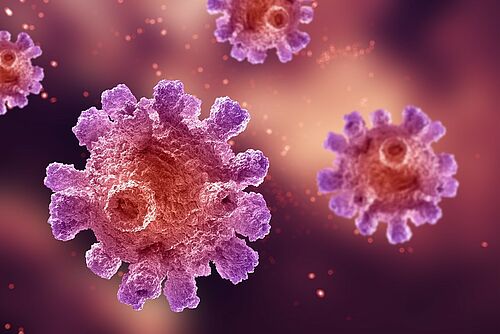What is HPV?
HPV, or human papillomavirus, is a group of more than 200 related viruses. Some types of HPV cause common warts on the hands and feet, while others are responsible for genital warts. However, it's the high-risk types of HPV that we need to be most concerned about. These high-risk strains can lead to the development of cervical cancer, as well as other cancers such as those of the anus, penis, throat, and vulva.
HPV is incredibly common, and most people who are sexually active will contract it at some point in their lives. In most cases, the immune system clears the virus on its own and the individual remains unaware of the infection. However, when the virus persists, it can lead to the abnormal growth of cells in the cervix, potentially progressing to cervical cancer over time.
How Does HPV Spread?
HPV is primarily spread through intimate skin-to-skin contact, including vaginal, anal and oral sex. It’s important to note that HPV can be transmitted even when an infected person shows no signs or symptoms. This silent nature of the virus makes it easy to unknowingly pass it on to others.
While condoms can reduce the risk of HPV transmission, they do not provide complete protection since HPV can infect areas not covered by a condom. The virus can also be passed through other forms of close skin-to-skin contact, making it challenging to prevent entirely.
Preventing HPV and Cervical Cancer
The most effective way to prevent HPV and its potential complications is through vaccination. The HPV vaccine is recommended for preteens (both girls and boys) aged 11 to 12, but it can be given as early as age 9 and up to age 26 for those who missed getting vaccinated earlier. The vaccine targets the most dangerous strains of HPV, significantly reducing the risk of developing cervical cancer.
In addition to vaccination, regular cervical screening (Pap tests and HPV tests) is crucial. These tests can detect precancerous changes in the cervix, allowing for early intervention before cancer develops. For sexually active individuals, practicing safer sex by limiting the number of sexual partners and using condoms can also help reduce the risk of contracting HPV.
The Role of Testing: EUROIMMUN’s EUROArray HPV
Regular testing is a cornerstone of cervical cancer prevention. EUROIMMUN's EUROArray HPV is a cutting-edge tool that enhances the accuracy and efficiency of HPV detection. This advanced system combines polymerase chain reaction (PCR) and microarray technologies to identify the presence of high-risk HPV strains that are most likely to cause cervical cancer.
The EUROArray HPV test uses BIOCHIP technology, which allows for the simultaneous detection of up to 36 different DNA sequences, including the high-risk HPV types. This comprehensive approach ensures that even the most subtle infections are detected early, providing critical information for effective medical intervention. The ability to test multiple samples in parallel also means quicker results and better management of patients at risk of cervical cancer.
Conclusion
Cervical cancer is largely preventable, and awareness about HPV is key to reducing its impact. By understanding how HPV spreads, taking preventive measures such as vaccination and participating in regular screenings with advanced tools like EUROIMMUN’s EUROArray HPV, we can protect ourselves and our loved ones from this potentially deadly disease.


















